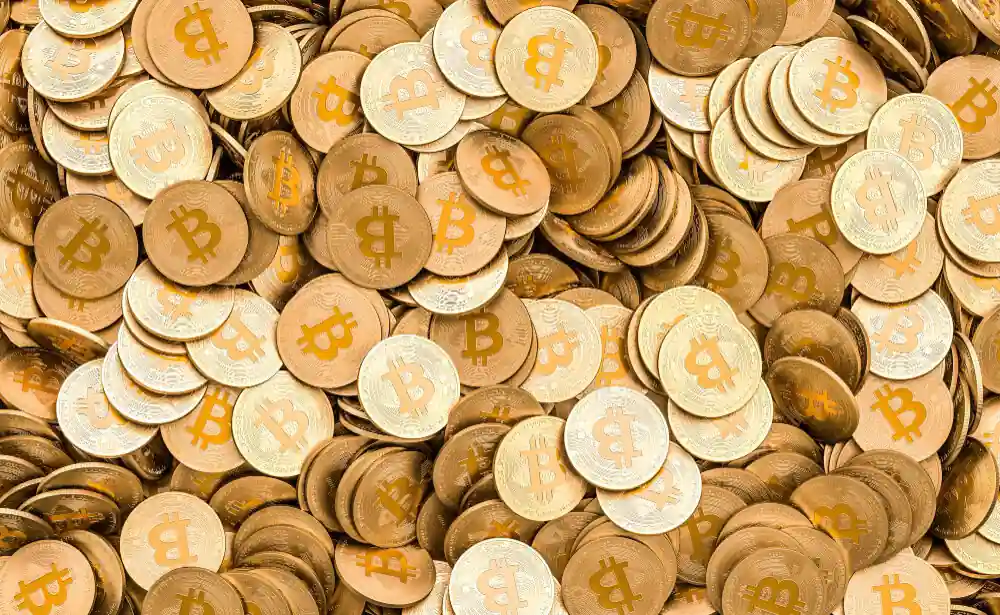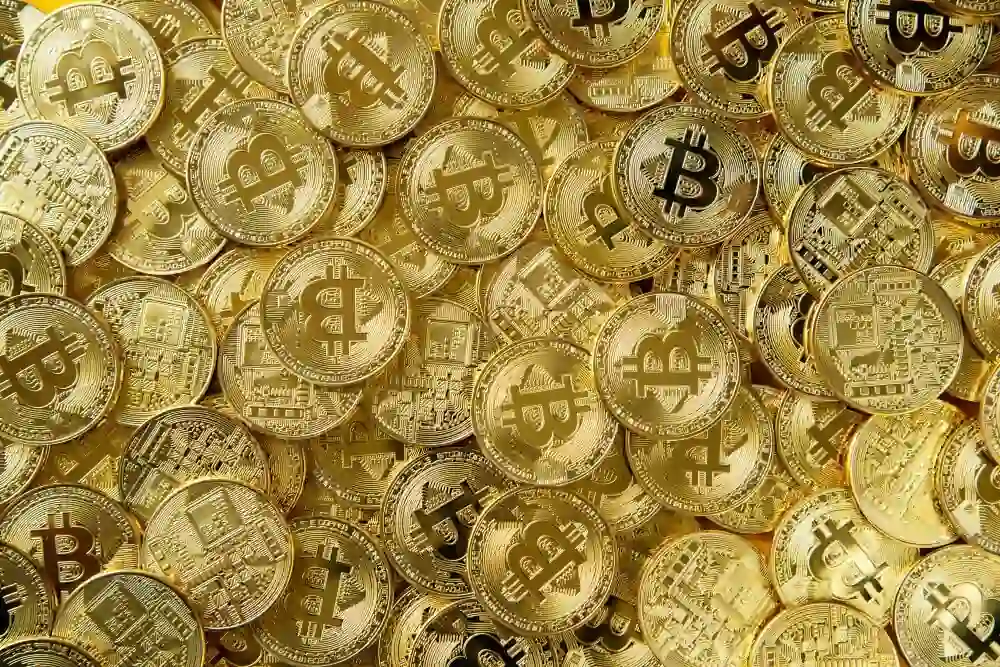As the world evolves rapidly, so does our perception of money. One of the most significant developments in this domain is the advent of Bitcoin (BTC), a decentralized virtual currency with no central bank or single point of administration. With Bitcoin, payments can be made between users on a peer-to-peer network without intermediaries. Since its inception by the mysterious Satoshi Nakamoto in 2009, Bitcoin has risen to prominence, revolutionizing the financial landscape and ushering in a new era of cryptocurrency. BTCs significance stems from multiple factors. Its decentralized nature gives users autonomy over their finances, free from governmental control. It offers a degree of anonymity, as transactions are not linked to real-world identities. Furthermore, its blockchain technology ensures transparency and security, with every transaction recorded publicly. However, one aspect of Bitcoin that genuinely sets it apart is its supply limit. Unlike traditional currencies, which can be printed in response to economic needs, Bitcoin has a maximum limit of 21 million coins. But why can only 21 million Bitcoin exist? This scarcity model was designed to mimic precious metals and combat inflation, adding to BTC’s allure as 'digital gold.' The cap on Bitcoin's supply is not merely an arbitrary limit but is deeply embedded in the protocol. Its implications are far-reaching, impacting the mining process, the value of Bitcoin, and its potential as a viable alternative to traditional currencies. This article will look at the reasons behind this limit, its implications on the Bitcoin ecosystem, and the role of secure crypto wallets in storing these finite digital assets. Whether you're a seasoned BTC enthusiast or a curious observer discovering PlasBit and crypto for the first time, understanding the dynamics of this limit gives valuable insights into the cryptocurrency world. So, let's embark on this journey to unravel the mystery behind the 21 million Bitcoin limit and its significance in the cryptocurrency world.
Exploring the Nature of BTC
As you have read, unlike traditional currencies issued by central banks, Bitcoin operates on a peer-to-peer network where transactions occur directly between users without an intermediary. This pioneering cryptocurrency is often depicted as the first successful implementation of blockchain technology.
The Role of Blockchain Technology
Blockchain, the underlying technology of Bitcoin, is an open, distributed ledger that registers transactions across many computers so that the involved records cannot be altered retroactively. This immutability provides a high level of security, ensuring that Bitcoin transactions are transparent and resistant to fraud. A network of crypto nodes maintains the blockchain, each keeping a copy of the entire blockchain and validating new transactions.
Understanding Bitcoin Transactions
In the Bitcoin network, transactions are confirmed by miners who bundle them into 'blocks' and add these to the blockchain. A BTC transaction involves a transfer of value between network wallets that gets included in the blockchain. Each wallet has a private key, a secret piece of data used to sign transactions, providing mathematical proof that the Bitcoins come from the wallet's owner.
Bitcoin Mining and Its Importance
Mining plays an integral role in the Bitcoin ecosystem. Miners use advanced computer hardware to solve complex mathematical problems that validate transactions and secure the network. They are rewarded with new Bitcoins for this work. However, the reward halves approximately every four years in an event known as 'halving,' which directly contributes to the finite supply of BTC. As we delve deeper into the reasons behind the 21 million Bitcoin limit, we'll see how this aspect of mining has an influential role. By understanding these fundamental aspects of Bitcoin, we can better appreciate its unique properties and the reasons behind its limited supply. The following section will unravel the mystery behind the 21 million Bitcoin cap.

Why Can Only 21 Million Bitcoin Exist?
The 21 million limit on Bitcoin was set by its creator, Satoshi Nakamoto, as a way to create scarcity and mimic the characteristics of a commodity like gold. The idea was to create an asset governments or institutions couldn't control. This limit was encoded into the Bitcoin software at its inception. As a result, BTC is designed to be deflationary, unlike most fiat currencies, which are inflationary.
The Mathematics and Algorithms Involved
This limit involves complex mathematics and algorithms. The Bitcoin protocol runs on a system called Proof of Work, where miners compete to solve complex mathematical problems. The first miner to provide the correct solution can add a new block to the blockchain and is rewarded with a certain number of BTC. The total amount of Bitcoins that can be mined is determined by the sum of the geometric series: 50 + 25 + 12.5 +, which then continues. This series converges to 100, meaning that the total number of Bitcoins that can ever be mined is 100 times the original block reward, which is 50. Hence, the total number of bitcoins is 100 * 50 = 5000. But since each Bitcoin can be divided into 100 million satoshis, the total number of satoshis that can ever exist is 5000 * 100 million = 500 billion. Since 1 Bitcoin = 100 million satoshis, the total number of BTC that can ever exist is 500 billion / 100 million = 21 million.
Significance of Limit on Bitcoin's Value and Scarcity
The 21 million limit has massive implications for Bitcoin's value and scarcity. It gives BTC a deflationary nature, meaning its value tends to increase over time due to limited supply, unlike inflationary currencies, where supply is virtually unlimited. Why can only 21 million Bitcoin exist? This feature makes Bitcoin a potential store of value or "digital gold." Moreover, as the number of bitcoins that can be mined decreases over time, the demand for Bitcoin may continue to rise, given the growing interest and acceptance of the cryptocurrency. This finite supply, combined with increasing demand, can potentially increase the price of BTC significantly in the long run.
The Role of 'Halving' in the 21 Million Limit
A crucial part of reaching the 21 million limit is the process of 'halving.' Every 210,000 blocks, approximately every four years, miners' reward for adding a new block to the blockchain is halved. This process is known as Bitcoin halving. The initial reward when Bitcoin was first created was 50 BTC. The initial halving occurred in 2012 when the reward was reduced to 25 BTC. The second and third halvings happened in 2016 and 2020, when the reward was further reduced to 12.5 and 6.25 BTC, respectively. This halving process will continue approximately until 2140, when 21 million Bitcoins will have been mined. Once this limit is reached, miners will no longer receive block rewards but will be compensated with transaction fees. This halving mechanism ensures that Bitcoin's supply decreases over time, creating scarcity and potentially driving up the value of each BTC as demand increases. It's a process that not only contributes to the limit of 21 million but also plays a significant part in shaping the economic model of Bitcoin. The 21 million Bitcoin limit is an innovative concept differentiating Bitcoin from traditional currencies. The complex algorithms, mathematical models, and the halving process make Bitcoin a unique and intriguing financial asset. Understanding these elements is fundamental for any Bitcoin enthusiast or investor.
The Process of Bitcoin Mining
Bitcoin mining is one of the most vital processes in the Bitcoin network. Through this process, new Bitcoins are minted and added to the network. But exactly how does Bitcoin mining work? Bitcoin mining is a computational process that involves solving complex mathematical problems, also known as proof-of-work. These problems are so complicated that they require significant computational power to solve. This process is the backbone of the Bitcoin network, as it validates and records all transactions made on the blockchain. When a BTC transaction is made, it is grouped with others into a 'block.' Miners then compete to validate these blocks by solving the proof-of-work mathematical problem. The first miner to solve this gets to add the block to the blockchain. This process of adding validated transactions to the public ledger is what we refer to as mining.
Miners and Their Role in The Bitcoin Network
Miners play a pivotal role in maintaining the security and resilience of the Bitcoin network by validating and authenticating all transactions on the blockchain. This process prevents double-spending, a fraudulent technique of spending the same amount twice. Miners also create new BTC through a process known as block reward. When miners successfully create a block, they are rewarded with a certain number of Bitcoins. Providing this reward is the only way new Bitcoins are created, which means miners essentially facilitate the growth of the Bitcoin network.
Minting New Bitcoins
The Bitcoin protocol strictly regulates the creation of new BTC. Initially, the block reward was 50 Bitcoins. However, as you have read, this reward is reduced by 50% in four-year cycles. As of 2020, the block reward stands at 6.25 Bitcoins. This halving process will continue until the 21 million Bitcoin limit is reached. Why can only 21 million Bitcoin exist? The answer is that the design of this system ensures a steady, predictable supply of new Bitcoins, creating a deflationary economic model. It also increases the scarcity of Bitcoin over time, which is a significant factor contributing to its value.
Challenges and Rewards of Bitcoin Mining
Bitcoin mining is not without its challenges. The process requires substantial computational power, which translates into significant energy consumption. This high energy requirement is one of the primary criticisms of Bitcoin mining. Furthermore, as the mathematical problems become more complex and the competition increases, the profitability of mining decreases. The halving of block rewards further exacerbates this challenge. Despite these challenges, Bitcoin mining can be rewarding. The block reward, although halving, can still be of substantial value given the current value of BTC. Plus, miners also receive transaction fees, providing additional incentives. Bitcoin mining is a fundamental process in the Bitcoin network. It facilitates the minting of new Bitcoins, validates transactions, and assures the security and integrity of the network. However, it comes with significant challenges, notably high energy consumption and decreasing profitability. But despite these challenges, for many, the potential rewards make BTC mining an attractive proposition.
Storing BTC in a Secure Crypto Wallet
After successfully mining Bitcoin, the next crucial step is ensuring its safe and secure storage. This requirement brings us to the vital concept of a cryptocurrency wallet. A cryptocurrency wallet, colloquially known as a crypto wallet, is a digital interface that allows users to transfer, receive, and store digital currencies like Bitcoin. It's akin to a digital bank account, facilitating transactions and storing digital assets. Crypto wallets don't store cryptocurrencies, but they hold cryptographic keys - public and private - that interact with blockchain to enable users to conduct transactions while keeping a record of their balance. Crypto wallets come in different types, including hardware, software, mobile, web, and paper. Each type has advantages and disadvantages concerning security, convenience, and usability. For instance, hardware wallets, though less convenient for frequent transactions, offer robust security as they store private keys offline, making them immune to online threats. Choosing a secure crypto wallet requires careful consideration. Security should be your paramount concern, but you must also consider user-friendliness, compatibility, and support for cryptocurrencies. Always opt for wallets with robust security features like two-factor authentication (2FA), multi-signature transactions, and regular software updates. Using a secure crypto wallet also involves following best security practices. Never disclose your private keys to anyone; always keep backup copies of your keys in a secure location. Regularly update your wallet's software with the latest security enhancements. If you're using a web or mobile wallet, ensure your device is free from malware and other security threats. For example, PlasBit crypto wallet combines a user-friendly interface with robust security protection.
Altering Bitcoin's Finite Supply: Debate and Criticism
Bitcoin, revered as the first successful decentralized cryptocurrency, has a supply cap of 21 million, a limit ingrained in the Bitcoin protocol. Technically, it is possible to alter Bitcoin's finite supply. It requires a consensus among the network participants, i.e., the miners, to agree on a protocol change. This agreement is necessary because BTC operates on a decentralized network where no single entity has control. If most miners agree to a change in the protocol, a 'hard fork' can be implemented, effectively creating a new version of Bitcoin with a different supply limit. However, as we have seen, this change is improbable, and here's why: the limited supply of BTC is one of its most defining and attractive features. It's the backbone of Bitcoin's economic model, simulating scarcity much like gold, leading to its moniker, "digital gold." Altering the supply cap could erode the trust and value people associate with Bitcoin, for example, those who spend regularly using a Bitcoin debit card. Moreover, those who own Bitcoin might resist such a change as it could potentially dilute the value of their holdings. However, many members of the PlasBit community ask the question: Could this supply cap ever be changed? As you have read, the answer isn't as straightforward as it might seem and has led to much debate. Despite the theoretical possibility of changing Bitcoin's supply limit, it has been criticized widely. Critics argue that altering the supply cap would undermine the fundamental principles on which Bitcoin was created: decentralization and scarcity. This scenario would, in turn, lead to several negative consequences:
Inflationary pressures:
From an economic perspective, critics argue that increasing the supply of Bitcoins could lead to inflationary pressures. Inflation is a scenario that Bitcoin aims to avoid, with its deflationary model acting as a hedge against the inflationary tendencies of traditional fiat currencies.
Diminished store of value:
Furthermore, critics reason that if the supply were to be increased, it would no longer offer the same store of value. The predictability and transparency of BTC’s supply schedule are crucial to its appeal as a store of value. Bitcoin's credibility could be severely impacted if these were to be compromised.
Centralization:
Critics also argue that it could lead to centralization. If a group of miners could enforce such a significant change, they could potentially gain disproportionate control over the network, contradicting Bitcoin's decentralized ethos.
Social and economic disruption:
Some critics point out the potential for social and economic disruption. If some participants on the network disagree with the change, it could lead to a split in the community, creating two separate Bitcoins. This scenario is known as a hard fork, and it has previously led to the creation of new cryptocurrencies like Bitcoin Cash and Bitcoin SV. While it's technically possible to alter Bitcoin's finite supply, the potential consequences and widespread criticism make it highly unlikely. BTC’s limited supply is integral to its value and appeal; any alterations could undermine these attributes. Therefore, the Bitcoin community largely agrees to preserve the sanctity of Bitcoin's finite supply despite the occasional debates.
Understanding the Implications of Bitcoin's Finite Supply
In considering Bitcoin's finite supply, we've delved into the intricate process of Bitcoin mining and explored the question: Why can only 21 million Bitcoin exist? We've seen how new Bitcoins are minted and explored the complexities and rewards of BTC mining. We've also underscored the importance of securely storing Bitcoin and the necessity for a robust crypto wallet. It's essential to remember the features that make a secure wallet: security, user-friendliness, compatibility, and support for various cryptocurrencies. Looking ahead, the finite supply of BTC, capped at 21 million, has profound implications for its value, use, and broader crypto adoption. As the availability decreases, the value of Bitcoin could potentially increase, provided the demand remains high. This scarcity element is a fundamental factor to consider in your crypto endeavors. It's, therefore, crucial to understand and appreciate the implications of this limit. The world of Bitcoin is complex and exciting, and securely participating in it requires vigilance and informed decision-making. Embrace the opportunities, but always prioritize security in your digital asset management.







